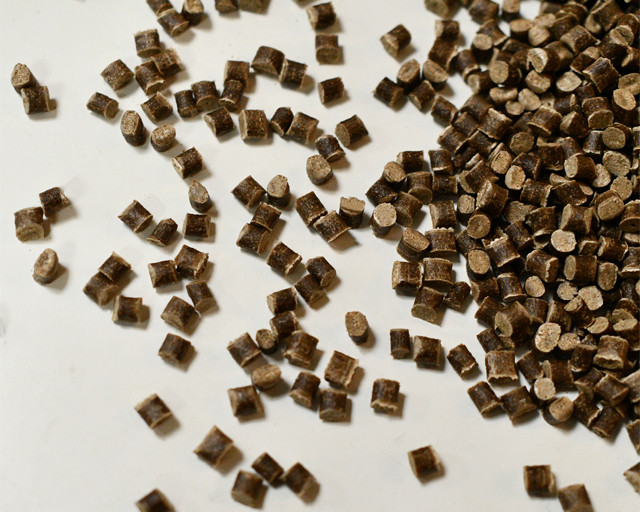Bioplastics: Friend or Foe? Unveiling the Pros and Cons of Eco-Friendly Plastics

Bioplastics offer a sustainable alternative to traditional plastics, but limitations like cost and composting hold them back. Enter innovative companies like AirX Carbon! They're pioneering bioplastics made from used coffee grounds, addressing cost concerns and even achieving a carbon negative footprint.
Bioplastics: From Plastic Pollution to Plant Power
Plastic pollution is a global crisis choking our oceans, littering our landscapes, and threatening wildlife. Traditional plastic, derived from fossil fuels, can take hundreds of years to decompose, leaving behind a legacy of environmental damage. But there's hope on the horizon! Bioplastics are emerging as a game-changer, offering a sustainable alternative to this environmental burden.
Bioplastics are a diverse group of materials derived from renewable resources like plant starches, cellulose, and even algae. Unlike traditional plastics, bioplastics often boast the potential to be biodegradable, meaning they can break down under specific conditions into harmless components by microorganisms. This significantly reduces their long-term environmental impact.

Renewable resources for bioplastics production
However, it's important to understand the distinction within bioplastics:
- Bio-based plastics: These are the champions of carbon capture. They are derived from plant materials that have absorbed CO2 through photosynthesis. When processed into bioplastics, this captured carbon remains trapped within the material, contributing to a potentially negative carbon footprint.
- Biodegradable plastics: These plastics, while not necessarily bio-based, can be engineered to break down under specific conditions, like industrial composting facilities. This helps to divert plastic waste from landfills and reduce plastic pollution.
Bioplastics represent a crucial step towards a more sustainable future for plastics. They offer a renewable and potentially biodegradable alternative, opening doors to a more responsible relationship with plastic. But before diving deeper, let's explore the science behind these innovative materials!
Pros and Cons of Bioplastics: Weighing the Sustainability Equation
Bioplastics have emerged as a beacon of hope in the fight against plastic pollution, but like any innovation, they come with their own set of advantages and disadvantages. Let's delve into both sides of the bioplastic equation.
Pros: A Greener Footprint
- Reduced Reliance on Fossil Fuels: Bioplastics are derived from renewable resources like plant starches or cellulose, lessening dependence on finite fossil fuels for plastic production.
- Potentially Lower Carbon Footprint: Bio-based plastics, a specific type of bioplastic, capture carbon through plant growth. This captured carbon remains trapped within the final product, potentially contributing to a negative carbon footprint.

Carbon negative footprint
- Biodegradability: Certain types of bioplastics are designed to break down under specific conditions such as industrial composting facilities. This can significantly reduce plastic waste accumulating in landfills for centuries.
- Circular Economy Potential: The use of renewable resources and potential biodegradability can contribute to the creation of a more closed-loop system for plastic use and disposal.
Cons: Challenges and Considerations
- Higher Production Costs: Currently, bioplastics often have higher production costs compared to traditional plastics. However, advancements in technology are leading to cost reductions.
- Composting Requirements: The biodegradability of some bioplastics is dependent on specific composting conditions. Lack of widespread industrial composting infrastructure can limit their environmental benefits.
- Limited Biodegradability: Not all bioplastics are biodegradable and require proper disposal to avoid environmental harm. Improper disposal of some bioplastics can negate their potential benefits.
- Land Use Concerns: Large-scale production of bioplastics might raise concerns about land-use changes for bio-based feedstock production.
Bioplastics offer a promising path toward a more sustainable future for plastics. However, it's important to be aware of the current limitations and ongoing developments to ensure we maximize their environmental benefits.
AirX Carbon: Pioneering Bioplastics that Address Sustainability Concerns
The limitations of bioplastics, like higher production costs and limited composting infrastructure, can dampen their impact. However, innovative companies like AirX Carbon are leading the charge in developing bioplastics that address these very concerns.
Coffee Grounds to Cost-Competitive Solutions:

Bioplastic made from coffee grounds is produced by AirX
AirX Carbon stands out with their flagship product, AirX Carbon, a bioplastic derived from a surprising source - used coffee grounds! This readily available and often discarded material is transformed into a new type of bioplastic, offering several advantages:
- Cost Competitiveness: AIRX Carbon's technology allows them to produce bioplastics at a price point competitive with traditional options, even potentially up to 20% cheaper. This makes bioplastics a more accessible and realistic choice for businesses seeking sustainable solutions.
- Reduced Reliance on Virgin Materials: Utilizing recycled materials like coffee grounds reduces dependence on virgin resources for plastic production.
- Carbon Negative Impact: Unlike some bioplastics, AirX Coffee boasts a carbon negative footprint. This means it actively removes existing carbon dioxide from the atmosphere, not just reducing emissions.
- Reduced Land Use Concerns & Food Security: AIRX Coffee utilizes waste materials, avoiding competition with food production and minimizing land-use changes compared to some bio-based feedstocks.
A Sustainable Future for Plastics:
AirX Carbon's plant-based polypropylene is more than just cost-competitive; it's a significant step towards achieving global net-zero emissions. This innovative material offers three key benefits:
- Carbon Negative Impact: It actively removes carbon dioxide from the atmosphere.
- Material Versatility: AirX Coffee offers the flexibility to transform many industries, from packaging to durable goods.
- Economic Sustainability: Its affordability makes it a viable option for businesses seeking sustainable solutions.
Learn more at: Top Bioplastic Companies: Leading the Charge in Sustainable Solutions
Contact us
AirX is the world’s first carbon-negative bio-material made from coffee grounds manufacturer.
We specialize in producing bio-based composites using recycled carbohydrates derived from by-products such as coffee grounds, coconut husk, husk, and bamboo. Our goal is to promote sustainability through the use of eco-friendly materials.
We are always here to help and provide the best service possible. If you have any questions or would like to receive advice and feedback directly from our sales staff, please do not hesitate to contact us. You can reach us through:
- Whatsapp: +84 969 742 950
- Email: [email protected]
We look forward to hearing from you!

